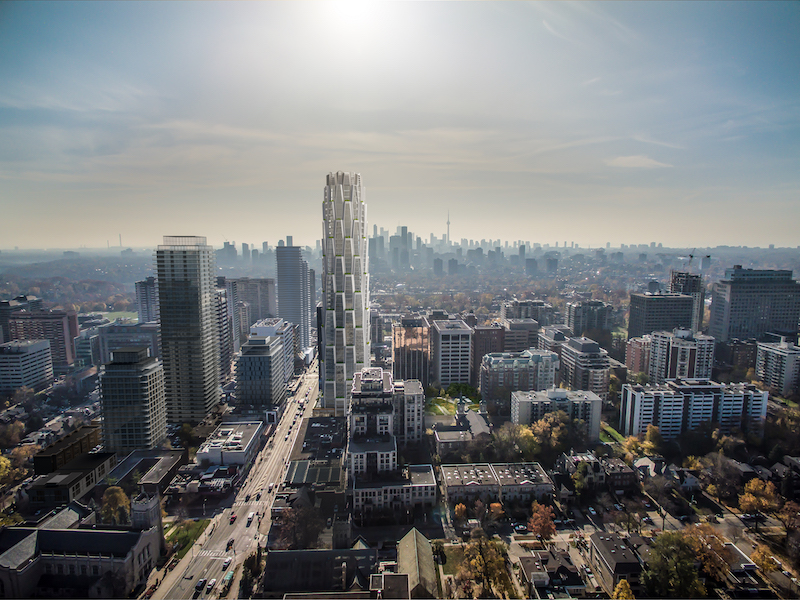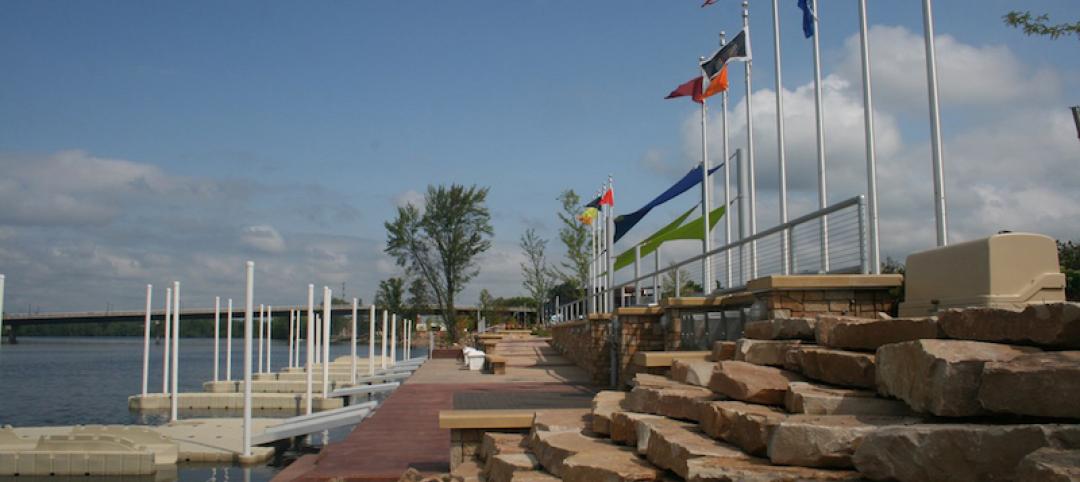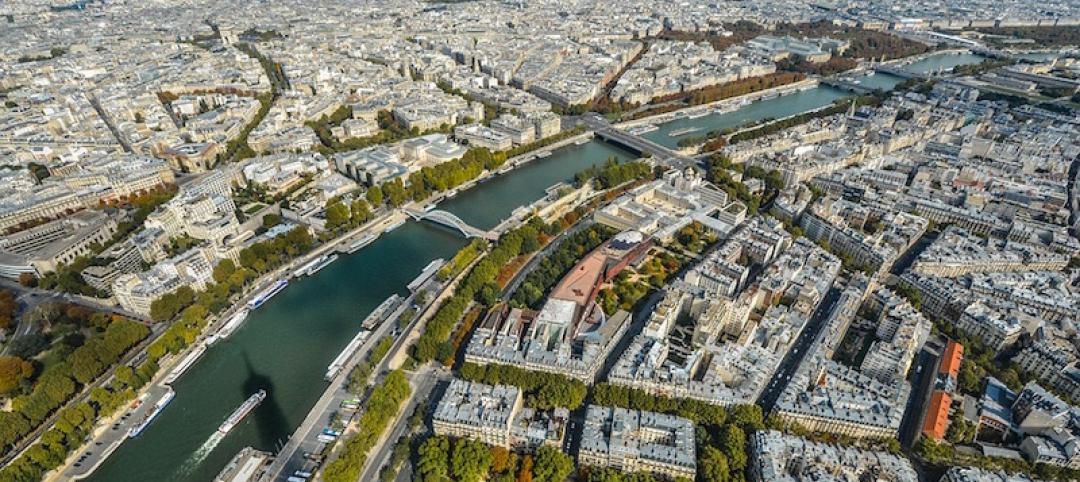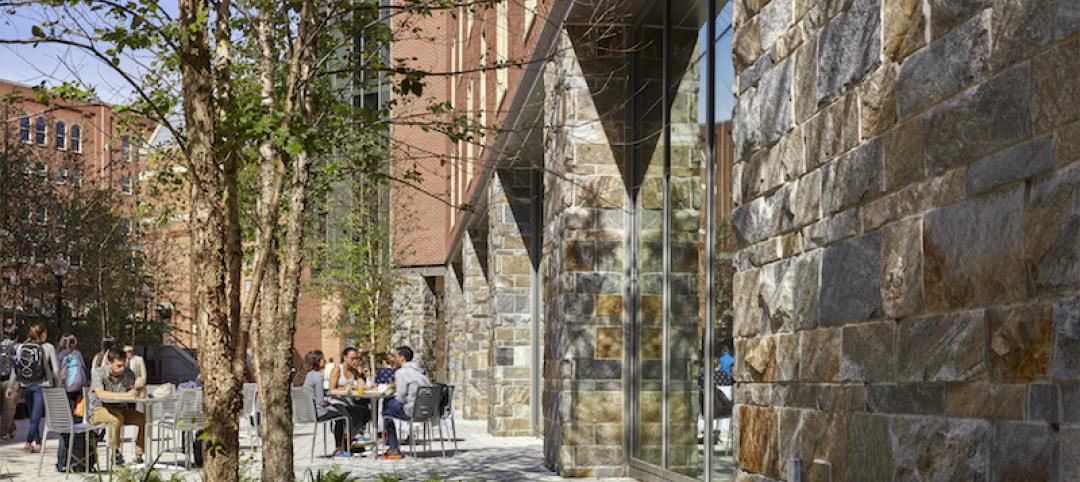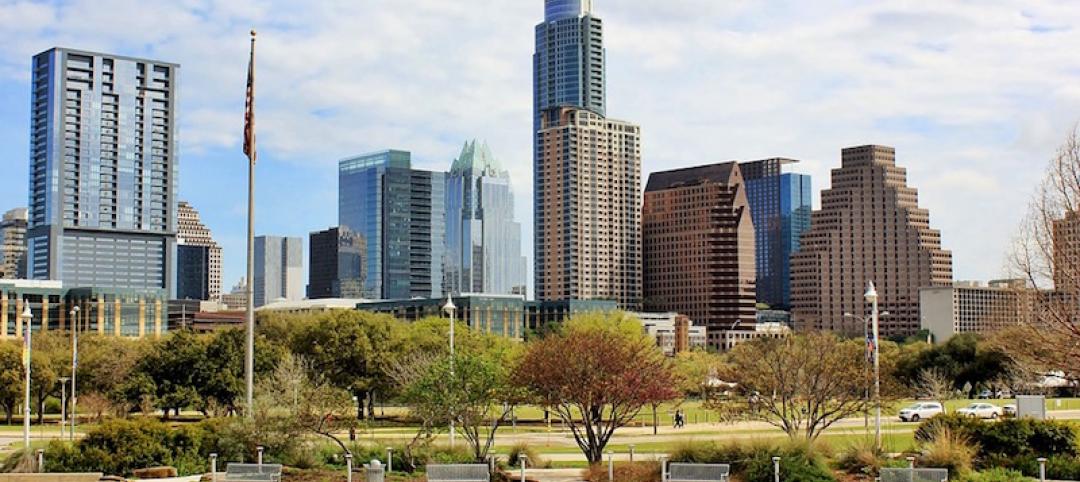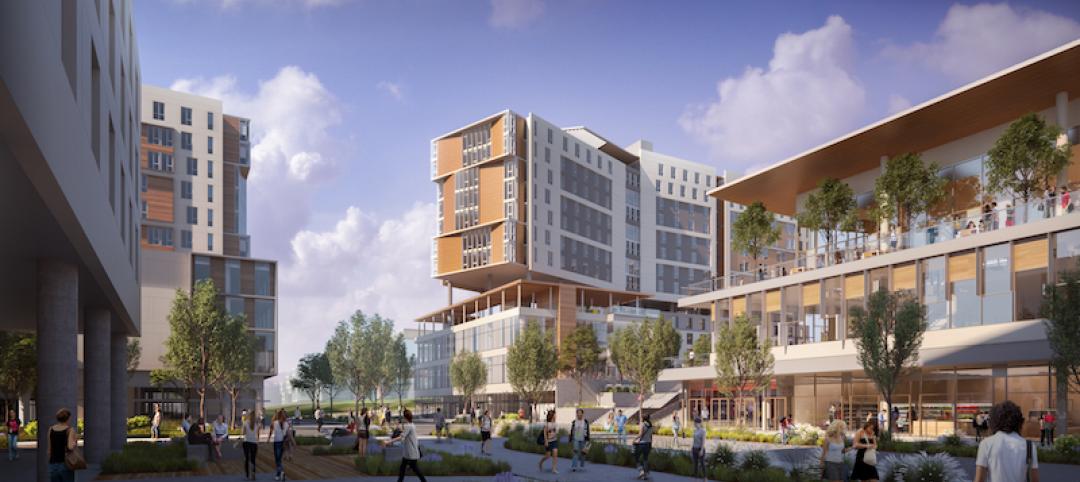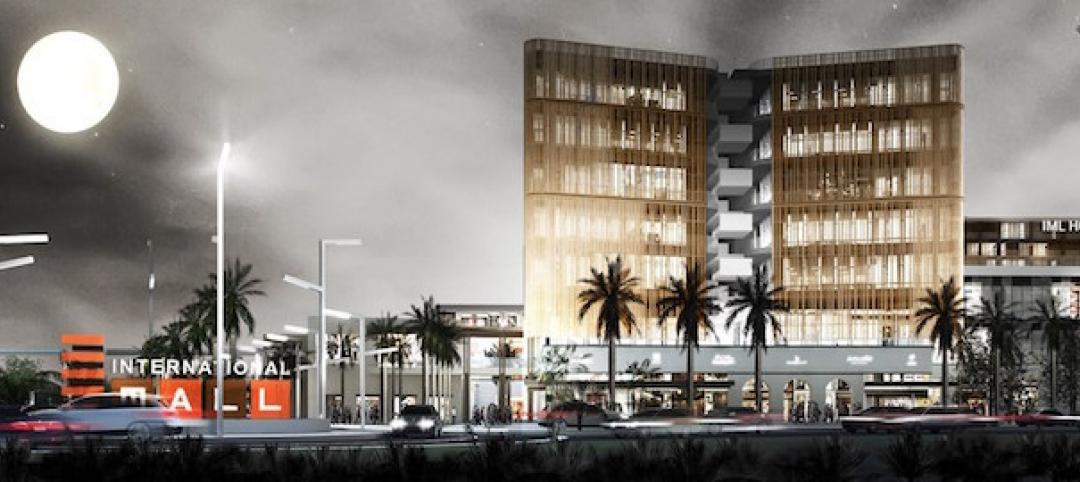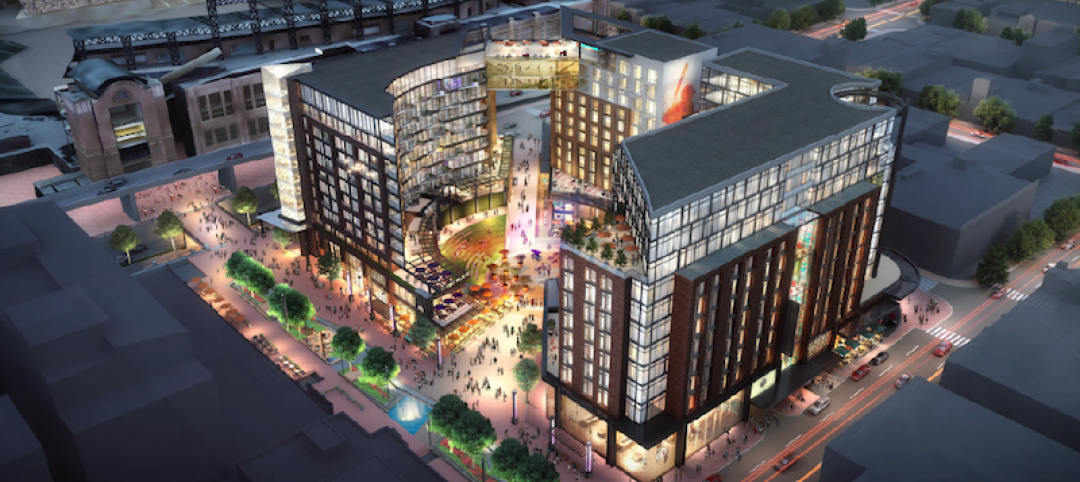Since 2013, the real estate investment firm Slate Asset Management has been acquiring properties in midtown Toronto. It currently holds 10, including all four corners at the intersection of Yonge Street (Toronto’s main drag) and St. Clair Avenue. On the southwest corner, Slate has devised a block plan with a mixed-used tower designed by Studio Gang, which is the architectural firm’s first project in Canada.
Yesterday, Slate and Studio Gang presented information about that block plan and tower during a community meeting of stakeholders that included residents’ groups and the local builders association.
Slate will soon submit this project to Toronto’s City Planning department for approval. It has launched a website to collect feedback and provide updates through the planning process. If all goes as expected, the project is scheduled for completion in 2024.
The 522-foot-tall, 51,049-sm tower, dubbed One Delisle (Delisle Street is a cross street), is located at a transit node, as Slate’s vision is to establish this area as a pedestrian-friendly neighborhood. “Because of our holdings, we’re in a unique position to take a holistic city building approach,” said Brandon Donnelly, Slate’s vice president of development, in a prepared statement.
The building will align with the neighborhood’s existing architecture, as well as with storefronts on Yonge Street. Two- and three-story retail buildings are currently on the property where the tower would be built. The plan calls for the historic façade of one of those buildings to be retained, but also pushed back 11.5 feet to create a 23-ft wide sidewalk along Yonge Street. Generous setbacks in general will allow for wider sidewalks and increased sunlight at street level.
Studio Gang has designed the 16-sided, 48-story tower as a series of eight-story elements that spiral up the façade. This design will allow for various-sized floor plates and diverse retail and residential options. Each of the 263 one- to three-bedroom residences in the tower will have its own terrace or balcony. And each element will be topped with planted terraces and protected balconies within them to extend outdoor living.

Ground-floor retail would be the base of a tower whose eight-story hexagonal elements taper at the top. Image: Norm Li, Courtesy of Studio Gang
The hexagonal modules that would comprise the building’s façade will provide passive solar heating and cooling. Three-fifths of the building’s façade will be opaque, allowing for better insulation. “The geometry of the façade, and the self-shading it provides, allow each living space to stay cool in summer, while also optimizing winter light,” said Jeanne Gang, Studio Gang’s founder, in a statement.
The AOR on this redevelopment project is Toronto-based WZHM Architects, whose office is located at Yonge and St. Clair. Urban Strategies is providing urban design and planning consultation. Janet Rosenberg & Studio is the landscape architect. Other Building Team members so far include Magnusson Klemenic Associates (SE), ERA Architects (heritage consultants), BA Group (transportation and planning consultants), WSP Global (sustainability consultant), and Theakston Environmental (environmental and wind consultant).
Slate has been active in its efforts to revive the Yonge and St. Clair area of midtown. In 2016 it commissioned an eight-story mural that a British artist known as Phlegm—in collaboration with a local muralist Stephanie Bellefleur—painted onto the side of a 12-story building. Slate also introduced a Gensler-designed ravine bench along Yonge Street in the summer of 2017. Slate in collaboration with Janet Rosenberg & Studio is currently revitalizing and expanding the Delisle-St. Clair Parkette by combining a surface parking lot with existing green space, enlarging the aggregate area by 50%.
The other properties that Slate has acquired in midtown Toronto over the past four years are mostly office towers that it is renovating, says Vakis Boutsalis, a spokesperson for the developer.
Related Stories
Urban Planning | Feb 26, 2018
A new way to approach community involvement for brownfield projects
A new community engagement program works with young adults to help the future of the neighborhood and get others involved.
Urban Planning | Feb 23, 2018
Paris car ban along the river Seine deemed illegal
Mayor Anne Hidalgo has appealed the decision.
Urban Planning | Feb 21, 2018
Leading communities in the Second Machine Age
What exactly is the Second Machine Age? The name refers to a book by MIT researchers Erik Brynjolfsson and Andrew McAfee.
Urban Planning | Feb 14, 2018
6 urban design trends to watch in 2018
2017 saw the continuation of the evolution of expectations on the part of consumers, developers, office workers, and cities.
Urban Planning | Feb 12, 2018
Stormwater as an asset on urban campuses
While there is no single silver bullet to reverse the effects of climate change, designers can help to plan ahead for handling more water in our cities by working with private and public land-holders who promote more sustainable design and development.
Urban Planning | Jan 24, 2018
Vision Zero comes to Austin: An outside perspective
Aside from the roads being wider and the lack of infrastructure for bikes and pedestrians, there seemed to be some deeper unpredictability in the movement of people, vehicles, bikes, and buses.
Urban Planning | Jan 10, 2018
Keys to the city: Urban planning and our climate future
Corporate interests large and small are already focused on what the impact of climate change means to their business.
Urban Planning | Jan 2, 2018
The ethics of urbanization
While we focus on designing organized and supportive architecture, much of urbanization is created through informal settlements.
Urban Planning | Dec 5, 2017
A call for urban intensification
Rather than focus on urban “densification" perhaps we should consider urban “intensification.”
Urban Planning | Dec 4, 2017
Sports ‘districts’ are popping up all over America
In downtown Minneapolis, the city’s decision about where to build the new U.S. Bank Stadium coincided with an adjacent five-block redevelopment project.


